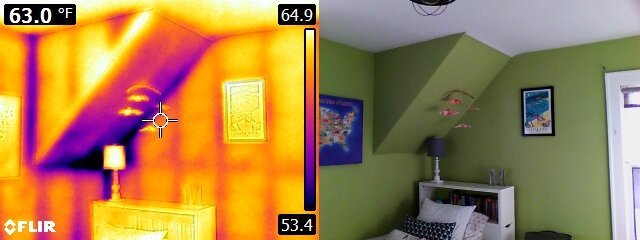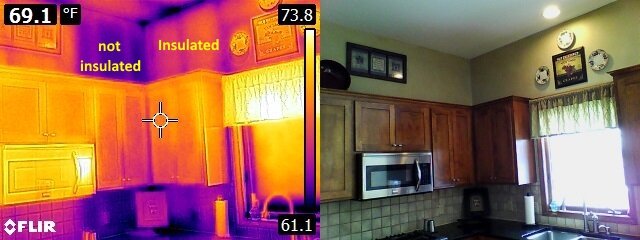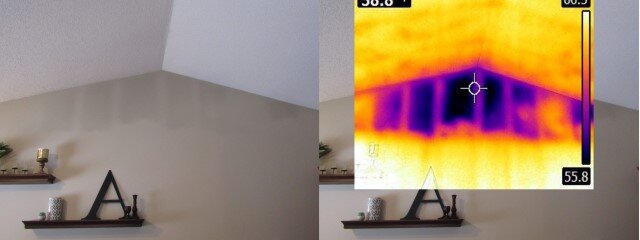
I frequently receive this same question: what causes those black verticals stains on walls along the stud lines?
To make it short and sweet, the answer is soot, and it’s usually caused by candles and thermal bridging.
GHOSTING
Mirriam Webster defines ghosting as “the act or practice of abruptly cutting off all contact with someone (such as a former romantic partner) by no longer accepting or responding to phone calls, instant messages, etc.”
But us home inspectors are referring to those weird black lines on walls when we talk about ghosting. This typically happens in homes where people burn a lot of candles, especially jar candles. Candles can give off soot which is comprised of tiny carbon particles. This gets deposited all over the house. The photo at the beginning of this blog illustrates this nicely. The lightest parts of the walls were covered with pictures, the parts that weren’t covered had a thin layer of soot, but the stud lines had the heaviest amount of soot.
The reason for the heavy deposits along the stud lines is because these are the coldest parts of the walls. The soot is attracted to and deposited on these cold areas for reasons well beyond my pay grade. But I’ve heard it may have something to do with very small amounts of condensation on the walls in these areas because the surface temperature has reached the dew point.
THERMAL BRIDGING
What’s the coldest part of a wall? The part that isn’t insulated, of course. Wood studs transfer heat from inside the home to the outside walls much better than insulation, and all of the sections of the wall that are giving up their heat can be clearly seen with an infrared camera. This is called thermal bridging, and it’s defined as the movement of heat across an object that is more conductive than the materials around it.


During very warm or cold weather, my infrared camera will double as a hideously expensive stud-finder due to thermal bridging. It’s awesome.
Thermal bridging occurs wherever we have a bunch of wood in insulated walls that isn’t separated from the wall surface with a thermal barrier. Which happens in pretty much every house that exists.
In some cases, we end up with ghosting in-between the studs because of missing insulation. The insulation value of wood itself, while poor, is enough to prevent soot accumulation. But it accumulates elsewhere. Here’s a perfect example of that, shown from inside the house with and without an infrared overlay.

And here’s a look at the opposite side of the wall, showing where the insulation was missing:

WHAT’S THE HARM?
So what’s the harm with these soot lines? Nothing. Ghosting is not a problem, it’s just unsightly. In some rare instances, the soot accumulation might be caused by a fuel-burning appliance that is severely malfunctioning and venting into the home. That would be a very unsafe situation that would typically be caught by working carbon monoxide alarms.
THE FIX
To remove ghosting from your walls and ceilings, you’ll probably need to clean, prime, and paint them.
To fix the underlying cause of ghosting, you’d need to have all of the drywall removed from your walls, have a thermal break applied to the walls such as 1” foam panels, and then have the walls finished again.
Or you could stop burning candles. Yeah, that would probably be a less expensive option.
If you want to keep burning candles, take a few basic steps to help reduce soot: keep candle wicks short, avoid jar-style candles, and don’t put candles in breezy places where the flame will be disturbed.

